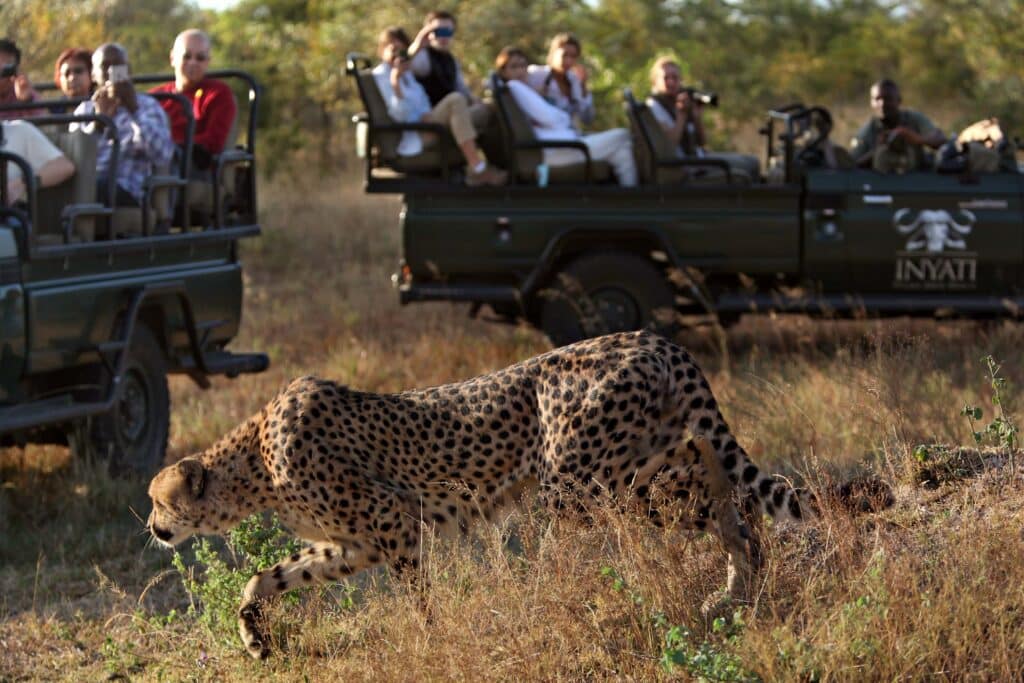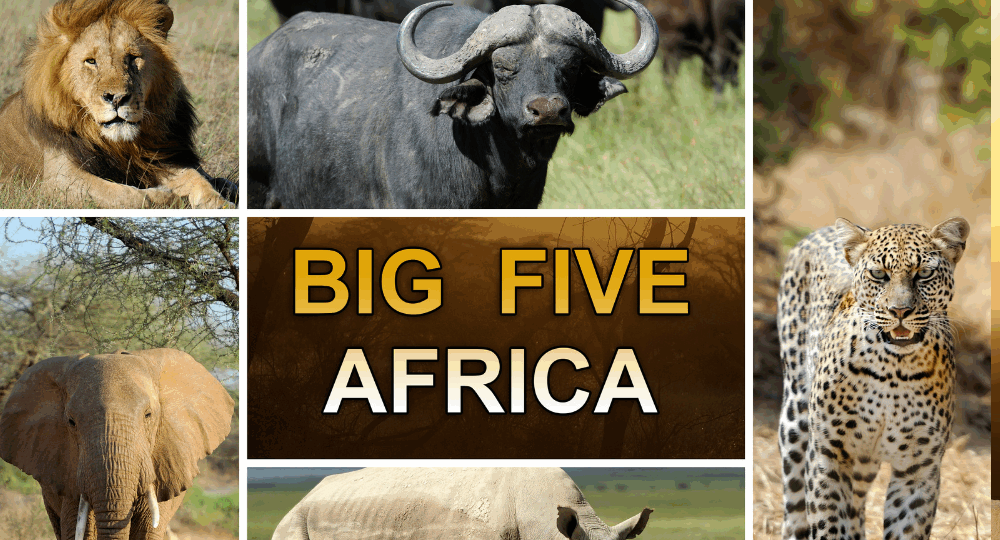The Big Five Explained – Africa’s Iconic Wildlife and Safari Secrets
When you picture an African safari, you probably imagine the lion, leopard, elephant, rhino, and Cape buffalo. Collectively known as the Big Five safari animals, they are the crown jewels of African wildlife. But beyond their fame, each of these species has an incredible story, surprising behaviors, and a vital role in Africa’s ecosystems.
Why Are They Called the Big Five?
Many people believe “Big Five” refers to the size of these animals—but the term actually comes from 19th-century big-game hunters. They used it to describe the five most dangerous animals to hunt on foot. Today, the meaning has changed, representing Africa’s most iconic safari sightings and a major draw for wildlife lovers worldwide.
“The greatness of a nation and its moral progress can be judged by the way its animals are treated.”
Mahatma Gandhi
1. Lion – The King of the Savannah
Lions are the only truly social cats, living in prides of up to 30 members. Contrary to popular belief, lionesses do most of the hunting while males guard territory. Despite their fierce reputation, lions spend up to 20 hours a day resting, making them one of the laziest predators in the animal kingdom.
2. Leopard – The Master of Stealth
Elusive and solitary, leopards are often the hardest Big Five member to spot. They are incredible climbers and can carry prey twice their weight into trees for safety. Each leopard has a unique rosette pattern, and unlike most cats, they are also strong swimmers.
3. Elephant – The Gentle Giant
The African elephant is the largest land animal on Earth, with some bulls weighing over 6,000 kg. These intelligent creatures display complex emotions and even mourn their dead. Elephants can detect vibrations through the ground with their feet and use their trunks for everything—from eating to greeting friends.
4. Rhinoceros – The Armored Grazer
Africa hosts both white and black rhinos, distinguished by their mouth shape, not color. White rhinos graze on grass, while black rhinos browse shrubs. With poaching still a threat, rhinos are among the most endangered of the Big Five, making every sighting a privilege.
5. Cape Buffalo – The Unpredictable Powerhouse
Cape buffaloes are often underestimated but are considered one of the most dangerous animals in Africa. Weighing up to 900 kg, they can charge at speeds of 57 km/h and are fiercely protective of their herd. Even lions think twice before taking one on.


Where to See the Big Five on Safari
Some of the best destinations to see all five in one trip include:
- Masai Mara National Reserve, Kenya – Famous for the Great Migration and year-round game viewing.
- Serengeti National Park, Tanzania – Endless plains filled with predators and grazing herds.
- Kruger National Park, South Africa – A Big Five stronghold with diverse landscapes.
Final Thought:
The Big Five aren’t just animals—they are living symbols of Africa’s wild heart. Seeing them in their natural habitat is a once-in-a-lifetime experience and a reminder of why African safari tours remain the ultimate adventure for travelers worldwide.
Book A Safari With Us


3 Comments
This is exactly what i was looking for, thank you so much for these tutorials
It would be great to try this theme for my businesses
What a nice article. It keeps me reading more and more!